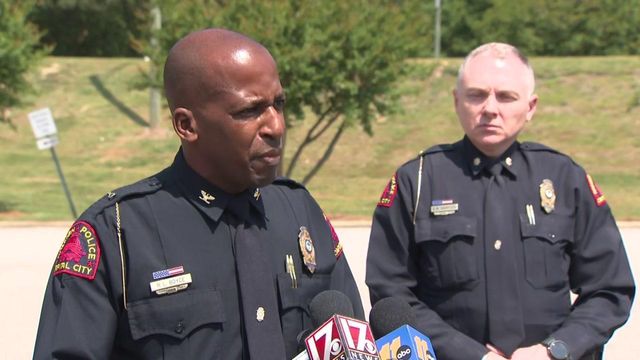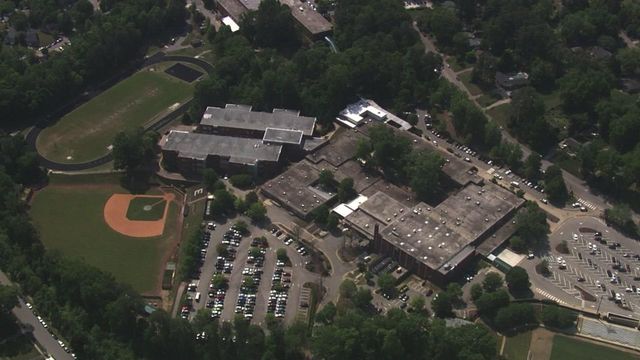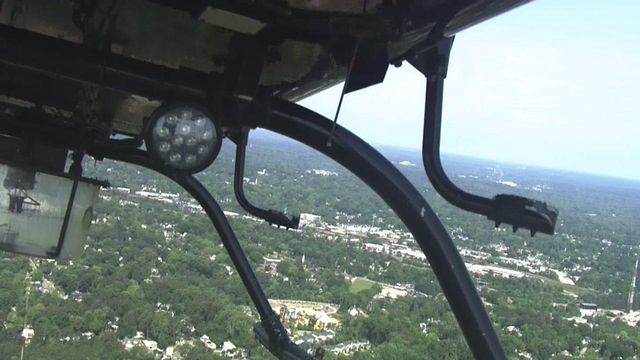NC's online charter schools show some improvement, but still fail to meet expectations

North Carolina's online charter schools showed some improvement last school year but still failed to meet academic growth expectations, according to school performance data released by the state Thursday.
North Carolina Connections Academy and North Carolina Virtual Academy both received overall performance grades of D for the 2016-17 school year – the same grades they received in 2015-16, their first year of operation.
Connections Academy improved its reading grade, going from a C to a B, and its math grade, going from an F to a D. Virtual Academy received a C in reading and an F in math last school year, the same as the previous year.
"While the scores were lower than what we wanted, they do not accurately represent the hard work put in by our teachers and students," said Virtual Academy Head of School Joel Medley. "We have overcome many challenges during our first two years, and the SPG (school performance grade) is but one measure of school success."
Connections Academy Superintendent Nathan Currie said his school "saw positive improvements in both math and reading."
"While we know there are still significant improvements to be made, math scores improved and closed the gap between the state and North Carolina Connections Academy by three percentage points, indicating measurable progress," Currie said in a statement. "Our number one priority is for our students to achieve academic success, and we remain committed to helping improve student performance on state tests across all subjects."
All North Carolina public schools have received A-F letter grades since 2013-14, when the General Assembly passed legislation requiring it. The grades are based on schools' achievement scores on state tests (80 percent) and students' academic growth (20 percent).
How did my school perform?
Search for your school below to find out what grade it received for the 2016-17 school year. Plus, see your school's reading and math test scores and graduation rates and find out how your school compares to the rest of the state.
B
Overall grade
Grade breakdown
Grades are based on your school’s achievement score on state tests (80 percent) and students' academic growth (20 percent). The performance scores are converted to a 100-point scale, broken into 15-point increments, to determine a school letter grade of A, B, C, D or F. Schools with the grade A* earned a grade of A and did not have any student achievement gaps larger than the largest average gap for the state overall. Schools showing a grade of "I" had insufficient data.
Component scores
Overall score
100
100
In 2016-17, met/did not meet/exceeded its growth expectations. In 2015-16, this school met/did not meet/exceeded its growth expectations.
Performance by subject
Grades are based on your school’s achievement score on reading and math tests (80 percent) and students' academic growth (20 percent). The performance scores are converted to a 100-point scale.
Reading score
Math score
Graduation rates
Rates are based on the percentage of students who graduated from your high school in four years or less.
15-16 GRADUATION RATE
16-17 GRADUATION RATE
How your school compares
See how your school compares to the state. The overall score is based on your school’s achievement on state tests (80 percent) and students' academic growth (20 percent).
Overall
Score
Your school
State
Growth
Achievement
SOURCES & METHODOLOGY: School performance, growth and achievement data is provided annually by the N.C. Department of Public Instruction. State-level comparison data is calculated by taking the average number of scores, based on the total number of all schools reporting.
The performance scores are converted to a 100-point scale and then used to determine a school performance grade of A, B, C, D or F. The final grade is based on a 15-point scale:
- A: 85-100
- B: 70-84
- C: 55-69
- D: 40-54
- F: Less than 40
- I: Incomplete
Some schools have received a letter grade of A*. Those schools earned a grade of A and did not have any student achievement gaps larger than the largest average gap for the state overall. This additional designation was added in 2014-15 to address federal requirements that exclude schools with significant achievement gaps from earning a state’s highest achievement designation. Schools with N/A, I (Insufficient data) or a blank indicates that the school does not have tested grades or sufficient data for reporting.
Interactive by Tyler Dukes // Analysis by Kelly Hinchcliffe
Schools are also judged on whether their students exceeded, met or did not meet academic growth expectations during the year. Connections Academy and Virtual Academy have not met growth in the two years they've been open.
"You can see areas of improvement from our first year as well as those that need more attention and effort," Medley said. "Plans were devised during the summer to tackle those areas and we have implemented them from the beginning of this current school year."
The schools were launched in 2015 as part of a four-year pilot program to determine whether virtual charters can succeed in the state. They are similar to regular charter schools but allow students to stay home and take all their classes online. Parents typically serve as learning coaches and act as a liaison between their children and teachers.
Since Connections Academy and Virtual Academy opened, they have struggled with low test scores and high withdrawal rates. A recent WRAL News investigation found that more than 30 percent of the schools' students withdrew the first year and 27 percent withdrew last year. Each school enrolls about 2,000 students from across the state each year and loses anywhere from 550 to 650 annually, according to state records
Virtual charter school leaders say their withdrawal numbers appear inflated because of the unique students they serve, some of whom only enroll for a brief time. Lawmakers have allowed the schools to stop counting certain students who leave, including those who withdraw within 30 days, leading to drastically lower withdrawal rates of 5 percent each.
In interviews with WRAL News earlier this year, leaders of the virtual charter schools acknowledged their low test scores and high withdrawal rates and asked for patience as they try to improve.
"We've gotta build a culture. We've gotta build an image. We've gotta build a brand," Currie, Connections Academy's superintendent, said. "When we got our test scores back (last year), it was baseline data for us. We knew kids came to us not strong in math."
At Virtual Academy, a common misconception is that the school enrolls only high-performing students, according to Medley.
"Everybody assumes that we have the best of the best. It's not the case," he said.
Medley noted that 66 percent of his students receive free and reduced lunch and that the school enrolls a slightly higher than average percentage of special education students.
"Forty percent of our third-graders came to us in the lowest quartile in the state," he added. "Often at the high school level, families (are) choosing us as a last-ditch effort for their kid to graduate."
North Carolina's virtual charter schools are not alone in their academic struggles. A 2015 study by Stanford University offered a snapshot of the country's 200 online charter schools and the 200,000 students they serve. The study found that the majority of online charter school students in the U.S. had far weaker academic growth in both math and reading compared to their traditional public school peers.
However, virtual charter school leaders point to another study, published in the the Journal of Online Learning Research, which found the following:
- Students who transfer into a virtual charter school experience academic regression in the first year.
- Students who remained enrolled in the virtual charter school beyond a second year experienced an academic recovery.
- Students remaining with the virtual charter school three years experienced a complete academic recovery and saw significant improvement in years four and five. The value-add in years four and five outpaced that of their matched peers.
Correction: A previous version of this story incorrectly listed some of the schools' scores. The story has been updated to reflect the correct grades. WRAL News regrets the error.












